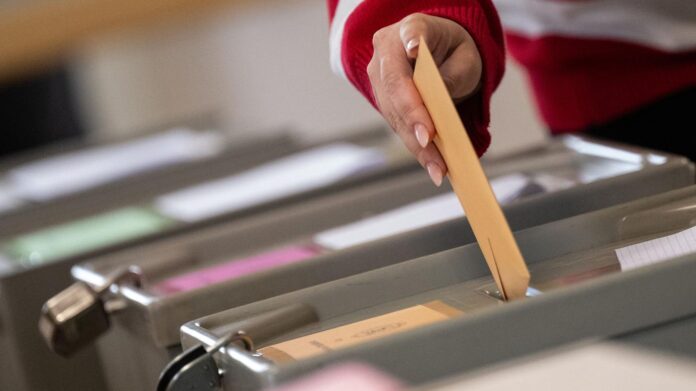
It is an important mood test before the 2025 federal election: Thuringia and Saxony are electing new state parliaments today. The polling stations opened at 8 a.m. According to polls in both states, the AfD can hope for record results of around 30 percent of the vote. However, due to a lack of partners, it will probably not be able to govern. A difficult coalition is expected, in which the new alliance Sahra Wagenknecht wants to get involved. In Saxony, Prime Minister Michael Kretschmer (CDU) has a chance of another term in office – in Thuringia, however, Prime Minister Bodo Ramelow (Left Party) has to fear for his post. The traffic light parties SPD, Greens and FDP are threatened with a debacle.
The two East German states have a combined population of only around 6.2 million – a fraction of the approximately 84 million people in Germany. The political situation in both states is also different: while the CDU has been in power in Saxony since 1990, the Left Party has been in government in Thuringia for the first time since 2014 with Ramelow. Nevertheless, the two elections are receiving an unusual amount of attention. 34 years after reunification, the dissatisfaction of many East Germans with the traditional parties and the functioning of democracy is causing great concern.
Thuringia before change of government
A heated election campaign revolved around the topics of education, the economy, the war in Ukraine and migration. The established parties, associations, churches and the economy also mobilized against the rise of the AfD. The party is classified as definitely right-wing extremist by the Federal Office for the Protection of the Constitution in both states, but is nevertheless a popular party with almost a third of the votes. In Thuringia, according to polls, the party, with its state leader Björn Höcke, is on course to become number one in a state election for the first time.
In a Forsa survey published on Friday, the AfD in Thuringia received 30 percent. The CDU received 22 percent in this survey, and the Sahra Wagenknecht (BSW) coalition received 17 percent. Ramelow’s Left Party received 14 percent, his previous coalition partners SPD 7 percent and the Greens 4 percent. The three parties recently formed a red-red-green minority government, but according to these figures, there is no majority in sight. CDU top candidate Mario Voigt wants to be prime minister, as does BSW candidate Katja Wolf. Both parties will probably have to join forces, possibly with the SPD, to find a majority without the AfD.
According to previous statements, no one wants to work with the AfD at the state level, even if it becomes the strongest force. It is eagerly awaited whether the AfD will achieve a third of the seats in Thuringia. Then it would have a so-called blocking minority on important issues and could, for example, block elections for judges.
Saxon coalition could narrowly hold on
Forsa also provided the latest figures for Saxony on Friday: There, the CDU was just ahead of the AfD with 33 percent of the second votes, with 31 percent. The BSW received 12 percent. The SPD would again be represented in the Dresden state parliament with 7 percent, as would the Greens with six percent. The FDP was – as in Thuringia – below the five percent hurdle. The Left also only received 3 percent according to Forsa, but could possibly get into the state parliament with two direct mandates.
If the election result were actually like this, a continuation of the coalition government of the CDU, the Greens and the SPD under Prime Minister Kretschmer would be possible in Saxony. An alliance between the CDU and the BSW would also be theoretically conceivable. AfD leader Tino Chrupalla gave his party the slogan: “We want to take on government responsibility.” Opinion polls are not forecasts, not even shortly before the election. Forsa surveyed a good 1,000 people from August 27 to 29. According to the institute, the margin of error was around three percentage points, both upwards and downwards.
Election campaign until the end
All parties campaigned for votes until shortly before the election. Chancellor Olaf Scholz (SPD), Vice Chancellor Robert Habeck (Greens) and FDP leader Christian Lindner tried to mobilize for the three traffic light parties. The AfD held a rally in Erfurt on Saturday afternoon with its top candidate Höcke and co-party leader Alice Weidel. Up to 3,000 people took part in the protest against the AfD. In Dresden, several thousand people demonstrated for solidarity, diversity and democracy on Saturday.
© dpa-infocom, dpa:240901-930-219232/2
This is a message directly from the dpa news channel.
